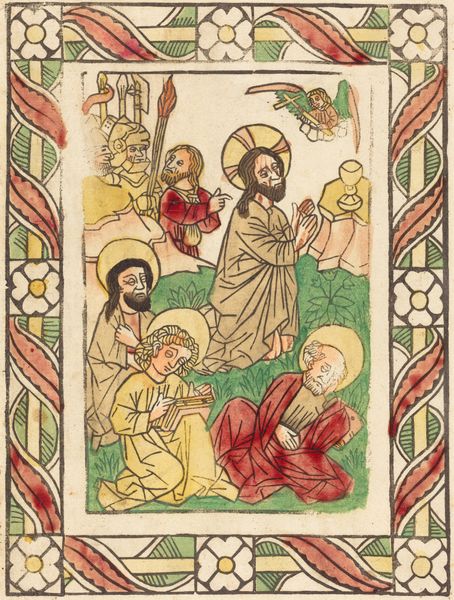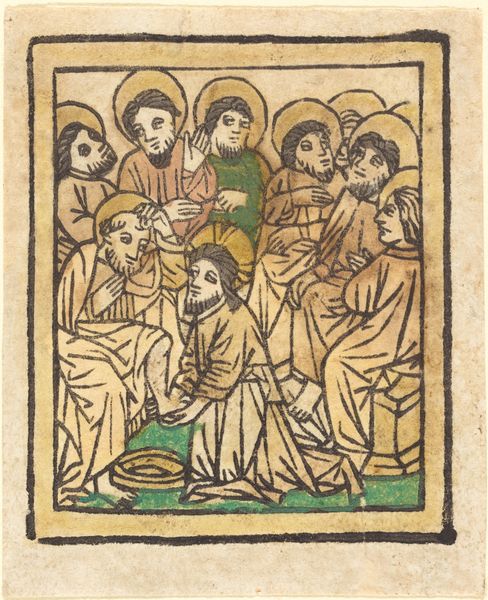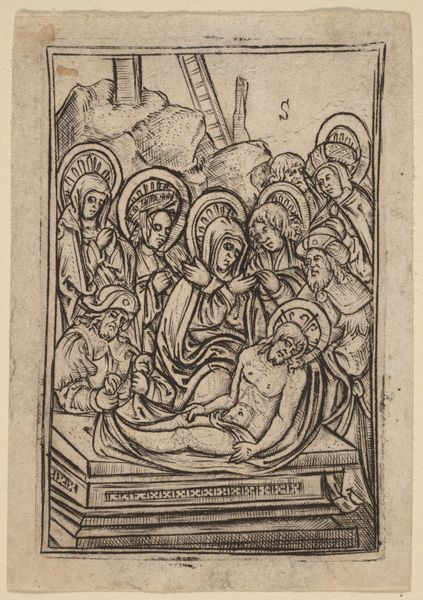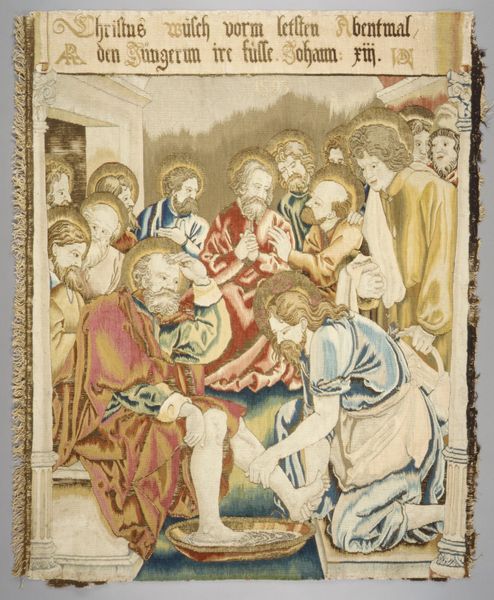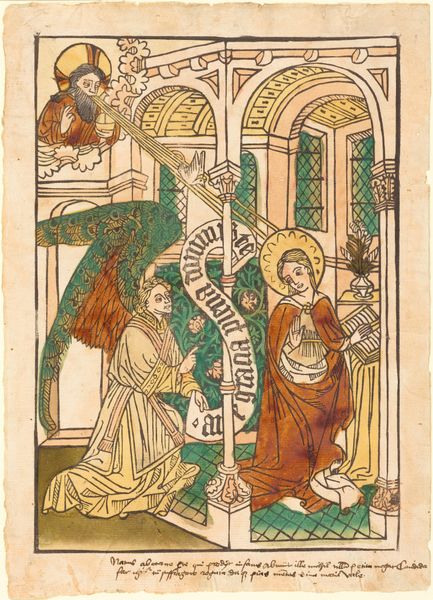
tempera, print
#
medieval
#
narrative-art
#
tempera
# print
#
figuration
#
history-painting
Copyright: National Gallery of Art: CC0 1.0
Curator: Wow, the rawness of emotion just leaps off the page, doesn't it? Editor: Indeed. What we're looking at is a piece known as "The Lamentation," made around 1450, likely a tempera print from an anonymous hand working in the late Medieval period. You immediately sense that profound grief. Curator: Grief, yes, but also something profoundly human. The awkward angles, the almost childlike quality of the figures—they add to, not detract from, the intensity. The color feels a bit flat, though; but, oddly, that works, it almost looks like watercolor! Editor: Well, it speaks to its historical context, right? Medieval art wasn't about photographic realism. Think about the function of images at the time: visual aids for a largely illiterate population. The somewhat rigid figures convey sorrow, while also operating as instantly recognizable iconography within Christian narratives. Curator: Ah, iconography! Yes, the halos... and those sorrowful faces. I like how each figure processes the scene differently, each reacts in a way that's uniquely human. It feels weirdly contemporary to me, this unrefined expression of emotion. There is a sort of naivete to it. Editor: I agree. And even if they seem somewhat stylized, it is important to contextualize the history. For many viewers throughout time this would’ve offered something like an expression of deep empathy, something truly affective. Consider the legacy of these religious images: they continue to be emotionally powerful because the collective loss and mourning echo throughout our lives. Curator: Absolutely. And it reminds me of something crucial: art doesn't need to be technically perfect to resonate deeply. It's the sincerity, the rawness…that's what really lingers. Editor: Precisely, the artist, regardless of anonymity or level of technical skill, captured a universally recognizable experience. As viewers, it is up to us to consider those complexities, the nuances within that historical context to broaden our engagement and understanding. Curator: I'll be pondering that raw sincerity long after I leave here. Editor: Me too—and considering how these images have been crucial throughout time and still resound today.
Comments
No comments
Be the first to comment and join the conversation on the ultimate creative platform.
